 Search by Keyword
Sign Up Below for our MONTHLY BEATLES TRIVIA QUIZ!
|
“FLYING”
(John Lennon – Paul McCartney – George Harrison – Ringo Starr)
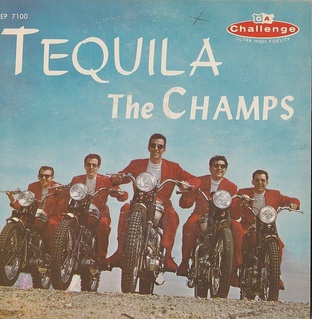 Instrumentals have played quite a large role in the history of rock and roll music, the US Billboard Hot 100 having been littered with instrumental smashes during this era. With “Tequila” by The Champs paving the way, rock and roll instrumental groups proliferated, The Ventures, Booker T. & The MG’s, Johnny And The Hurricanes and The Tornadoes all submitting successful offerings. Another obvious force to be reckoned with was the songwriting partnership of John Lennon and Paul McCartney, a team that scored 36 Billboard Top 10 hits as of mid 1967, their compositions spending a combined total of 38 weeks at the #1 spot on the charts within the previous three-and-a-half years. Instrumentals have played quite a large role in the history of rock and roll music, the US Billboard Hot 100 having been littered with instrumental smashes during this era. With “Tequila” by The Champs paving the way, rock and roll instrumental groups proliferated, The Ventures, Booker T. & The MG’s, Johnny And The Hurricanes and The Tornadoes all submitting successful offerings. Another obvious force to be reckoned with was the songwriting partnership of John Lennon and Paul McCartney, a team that scored 36 Billboard Top 10 hits as of mid 1967, their compositions spending a combined total of 38 weeks at the #1 spot on the charts within the previous three-and-a-half years.
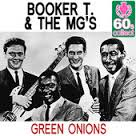 Combining these two successful elements - the Lennon / McCartney collaborative team and the genre of instrumental rock and roll - would surely create a phenomenal piece of music that would impress the music world for generations to come. The Beatles even attempted this in 1965 during the sessions for their album “Rubber Soul,” being inspired by the 1962 Booker T. & The M.G.’s instrumental hit “Green Onions.” This Beatles recording, however, didn’t reach the potential they intended and never progressed passed the initial recording attempt nor the working title of “12-Bar Original.” Combining these two successful elements - the Lennon / McCartney collaborative team and the genre of instrumental rock and roll - would surely create a phenomenal piece of music that would impress the music world for generations to come. The Beatles even attempted this in 1965 during the sessions for their album “Rubber Soul,” being inspired by the 1962 Booker T. & The M.G.’s instrumental hit “Green Onions.” This Beatles recording, however, didn’t reach the potential they intended and never progressed passed the initial recording attempt nor the working title of “12-Bar Original.”
Nearly two years later, could they finally pull off an original instrumental composition that would suit their purposes and be released? The answer was yes, although it didn’t exactly set the world on fire. This song, eventually entitled “Flying,” graced the November 27th, 1967 US album “Magical Mystery Tour” without too much notice.
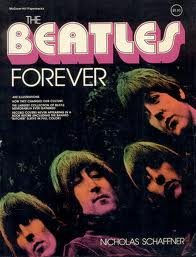 This isn’t to say that it didn’t get radio airplay. On the contrary, according to Nicholas Schaffner’s book “The Beatles Forever,” “’Flying’ has received more radio exposure than all but a handful of their songs (at that time). For countless disk jockeys soon discovered in this ethereal, infectious theme an ideal way to fill up those awkward odd moments before the hourly news: because there were no words, it didn’t seem rude to chatter at the same time, or to phase it out mid-song.” While “Flying” never made the charts in any way, shape or form, it did get extensive airplay because of the radio formats of the day. Go figure! This isn’t to say that it didn’t get radio airplay. On the contrary, according to Nicholas Schaffner’s book “The Beatles Forever,” “’Flying’ has received more radio exposure than all but a handful of their songs (at that time). For countless disk jockeys soon discovered in this ethereal, infectious theme an ideal way to fill up those awkward odd moments before the hourly news: because there were no words, it didn’t seem rude to chatter at the same time, or to phase it out mid-song.” While “Flying” never made the charts in any way, shape or form, it did get extensive airplay because of the radio formats of the day. Go figure!
Songwriting History
 “’Flying’ was an instrumental that we needed for ‘Magical Mystery Tour,’” states Paul in his book “Many Years From Now,” “so in the studio one night I suggested to the guys that we made something up. I said, ‘We can keep it very very simple, we can make it a twelve-bar-blues. We need a little bit of a theme and a little bit of a backing.’ I wrote the melody. The only thing to warrant it as a song is basically the melody, otherwise it’s just a nice twelve-bar backing thing…It’s credited to all four, which is how you would credit a non-song.” “’Flying’ was an instrumental that we needed for ‘Magical Mystery Tour,’” states Paul in his book “Many Years From Now,” “so in the studio one night I suggested to the guys that we made something up. I said, ‘We can keep it very very simple, we can make it a twelve-bar-blues. We need a little bit of a theme and a little bit of a backing.’ I wrote the melody. The only thing to warrant it as a song is basically the melody, otherwise it’s just a nice twelve-bar backing thing…It’s credited to all four, which is how you would credit a non-song.”
Because of the informal nature of the song, its writing was done during its recording sessions, the first being in EMI Studio Three on September 8th, 1967, and the second in EMI Studio Two on September 28th, 1967.
Recording History
On September 8th, 1967, The Beatles entered EMI Studio Three at approximately 7 pm to record “Aerial Tour Instrumental,” which was the working title of “Flying” at this stage (sometimes misspelled ‘Ariel Tour Instrumental’ on some of the documentation). Six takes of a basic rhythm track were recorded first, which consisted of Paul on bass, George on guitar with a prominent tremolo effect, John on organ and Ringo on drums.
 In his book “Here, There And Everywhere,” engineer Geoff Emerick describes this day’s events: “I wrapped up my pre-vacation Beatles work with one last long session, during which they recorded the instrumental song entitled ‘Flying.’ It was really nothing more than a twelve-bar blues born out of one of their late-night jams.” By saying this, Geoff insinuates that the song may have been inspired by one of their unproductive jam / recording sessions the group sometimes made the engineering staff sit through during this period, such as the one that occurred on May 9th, 1967. Although his recollections of this session are quite interesting and even humorous, there is no real evidence to suggest a direct link between the session and the result of “Flying.” It may have been wishful thinking on his part to assume that those “seven hours in a stoned haze” resulted in something useful. In his book “Here, There And Everywhere,” engineer Geoff Emerick describes this day’s events: “I wrapped up my pre-vacation Beatles work with one last long session, during which they recorded the instrumental song entitled ‘Flying.’ It was really nothing more than a twelve-bar blues born out of one of their late-night jams.” By saying this, Geoff insinuates that the song may have been inspired by one of their unproductive jam / recording sessions the group sometimes made the engineering staff sit through during this period, such as the one that occurred on May 9th, 1967. Although his recollections of this session are quite interesting and even humorous, there is no real evidence to suggest a direct link between the session and the result of “Flying.” It may have been wishful thinking on his part to assume that those “seven hours in a stoned haze” resulted in something useful.
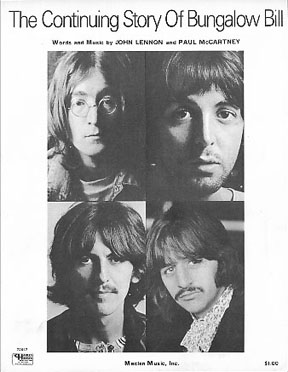 As for the September 8th session, "take six" was deemed best for the rhythm track. Interestingly, this take was followed immediately by thirty seconds of a fast-paced traditional Jazz-style recording featuring saxophone that was reportedly recorded directly from one of the tapes within John's Mellotron (as was done the following year with the guitar introduction to "The Continuing Story Of Bungalow Bill"). This was all recorded onto track one of the four-track tape. The other three tracks of the tape were then filled with doodling on the Mellotron, one per track, recorded backward. Since this extended the song to 9:36, they had to have fast forwarded the tape over seven minutes and then took to recording these random Mellotron sounds until the rhythm track appeared on track one. A very interesting adventure in the ‘avant garde’ craze of the times! As for the September 8th session, "take six" was deemed best for the rhythm track. Interestingly, this take was followed immediately by thirty seconds of a fast-paced traditional Jazz-style recording featuring saxophone that was reportedly recorded directly from one of the tapes within John's Mellotron (as was done the following year with the guitar introduction to "The Continuing Story Of Bungalow Bill"). This was all recorded onto track one of the four-track tape. The other three tracks of the tape were then filled with doodling on the Mellotron, one per track, recorded backward. Since this extended the song to 9:36, they had to have fast forwarded the tape over seven minutes and then took to recording these random Mellotron sounds until the rhythm track appeared on track one. A very interesting adventure in the ‘avant garde’ craze of the times!
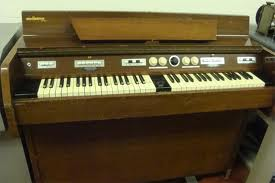 The engineering team then took to making a tape reduction to open up more tracks for overdubs, two attempts being made, "take eight" now considered the best. Onto this was overdubbed John playing the melodic Mellotron part in the second verse, this part being written by Paul as stated above. “It’s played on the Mellotron, on a trombone setting,” Paul recounts in “Many Years From Now.” The engineering team then took to making a tape reduction to open up more tracks for overdubs, two attempts being made, "take eight" now considered the best. Onto this was overdubbed John playing the melodic Mellotron part in the second verse, this part being written by Paul as stated above. “It’s played on the Mellotron, on a trombone setting,” Paul recounts in “Many Years From Now.”
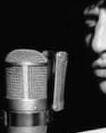 Also overdubbed on this day were the “vocals” as heard in the third verse, which really only amount to “la-la-la-la-la” in imitation of John’s Mellotron part in the second verse. “Ringo’s voice was the most prominent one on the chanting,” Geoff Emerick explains, “and that was done deliberately because Paul wanted a different kind of vocal texture, one that wasn’t so obviously ‘Beatlish.’” Also overdubbed on this day were the “vocals” as heard in the third verse, which really only amount to “la-la-la-la-la” in imitation of John’s Mellotron part in the second verse. “Ringo’s voice was the most prominent one on the chanting,” Geoff Emerick explains, “and that was done deliberately because Paul wanted a different kind of vocal texture, one that wasn’t so obviously ‘Beatlish.’”
 According to Geoff Emerick, George also overdubbed the pretty guitar parts heard throughout the song on this day. “George Harrison’s guitar had a distinctive sound, too, because I used a DI (direct injection) box instead of miking his amp. The end result was a mellow, jazzy tone that we felt perfectly complemented the tasty part he was playing.” According to Geoff Emerick, George also overdubbed the pretty guitar parts heard throughout the song on this day. “George Harrison’s guitar had a distinctive sound, too, because I used a DI (direct injection) box instead of miking his amp. The end result was a mellow, jazzy tone that we felt perfectly complemented the tasty part he was playing.”
 The overall consensus apparently was that the song was complete on this day. Geoff Emerick explains, “I simply lifted out a few minutes of the best bits, they added a number of overdubs, and the song was complete. From the outset it was always meant to be just incidental music for the film, so nobody wanted to spend a lot of time on it.” This being the case, four mono mixes were made of "take eight" at the end of this session by producer George Martin, Geoff Emerick and 2nd engineer Richard Lush before they ended the session at 2:45 am the following morning. The overall consensus apparently was that the song was complete on this day. Geoff Emerick explains, “I simply lifted out a few minutes of the best bits, they added a number of overdubs, and the song was complete. From the outset it was always meant to be just incidental music for the film, so nobody wanted to spend a lot of time on it.” This being the case, four mono mixes were made of "take eight" at the end of this session by producer George Martin, Geoff Emerick and 2nd engineer Richard Lush before they ended the session at 2:45 am the following morning.
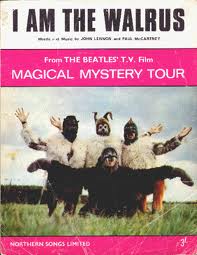 The song must have still been considered finished as of September 28th, 1967, since a tape copy of the fourth mono mix was made at an early recording session on this day to give to the film producer of their “Magical Mystery Tour” movie then in progress. Later that day, however, during the second recording session of this day, more overdubs were recorded that deemed the previous mono mix unusable. This session began at the usual 7 pm (or thereabouts) and began with mono mixing and editing of the song “I Am The Walrus,” attention then being given to “Aerial Tour Instrumental” (as it was still referred to) at about 9 pm. The song must have still been considered finished as of September 28th, 1967, since a tape copy of the fourth mono mix was made at an early recording session on this day to give to the film producer of their “Magical Mystery Tour” movie then in progress. Later that day, however, during the second recording session of this day, more overdubs were recorded that deemed the previous mono mix unusable. This session began at the usual 7 pm (or thereabouts) and began with mono mixing and editing of the song “I Am The Walrus,” attention then being given to “Aerial Tour Instrumental” (as it was still referred to) at about 9 pm.
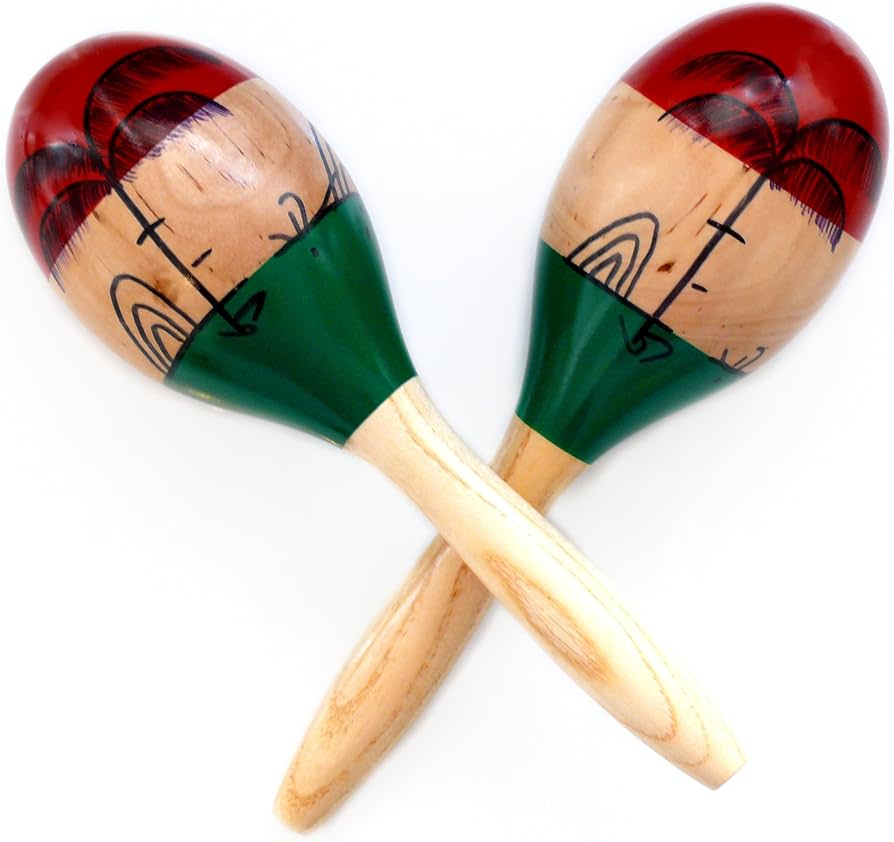 More overdubs were considered as needed to bring the song to its finished state. John added another Mellotron part, George added another guitar piece, and Ringo added maracas. The backwards organ sounds were then viewed as not enough for the final seven minutes of the song, so John and Ringo added even more to the ‘avant garde’ landscape by adding various tape loops (backwards and forwards) as well as percussion sounds, which extended the song even further to 11:52. Among the tape loops were orchestral recordings, harmonized flutes, and what sounds like a guitar strum looped over and over. Although this practice was used to good effect as a backdrop of sound in 1966’s “Tomorrow Never Knows,” the results of this session were more of a precursor to 1968’s “Revolution 9.” Five takes of these tape loops and effects were taped on this day, "take five" obviously being deemed the best. More overdubs were considered as needed to bring the song to its finished state. John added another Mellotron part, George added another guitar piece, and Ringo added maracas. The backwards organ sounds were then viewed as not enough for the final seven minutes of the song, so John and Ringo added even more to the ‘avant garde’ landscape by adding various tape loops (backwards and forwards) as well as percussion sounds, which extended the song even further to 11:52. Among the tape loops were orchestral recordings, harmonized flutes, and what sounds like a guitar strum looped over and over. Although this practice was used to good effect as a backdrop of sound in 1966’s “Tomorrow Never Knows,” the results of this session were more of a precursor to 1968’s “Revolution 9.” Five takes of these tape loops and effects were taped on this day, "take five" obviously being deemed the best.
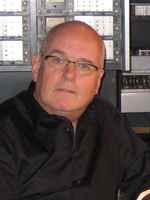 With this complete, the engineering team of George Martin, Ken Scott and Richard Lush worked at getting the perfect mono mix of “Aerial Tour Instrumental.” They made two attempts at this mono mix, numbered 5 and 6, the sixth mix being considered the best. Undoubtedly with The Beatles gone for the day, a decision was made to edit out most of the tape loops and effects John and Ringo had worked so hard on that day in order to reduce the song from its very lengthy condition to a more palatable 2:14 for record release. In the process, they also edited out the 30 seconds of jazz music at the end of their rhythm track recording. They did leave in about 52 seconds of the backwards Mellotron overdubs from September 8th, these overlapping the last four measures of The Beatles’ rhythm track. However, some of the discarded backward Mellotron sounds did find a use in the “Magical Mystery Tour” film in strategic places. This ended the session at about 3 am the following morning. With this complete, the engineering team of George Martin, Ken Scott and Richard Lush worked at getting the perfect mono mix of “Aerial Tour Instrumental.” They made two attempts at this mono mix, numbered 5 and 6, the sixth mix being considered the best. Undoubtedly with The Beatles gone for the day, a decision was made to edit out most of the tape loops and effects John and Ringo had worked so hard on that day in order to reduce the song from its very lengthy condition to a more palatable 2:14 for record release. In the process, they also edited out the 30 seconds of jazz music at the end of their rhythm track recording. They did leave in about 52 seconds of the backwards Mellotron overdubs from September 8th, these overlapping the last four measures of The Beatles’ rhythm track. However, some of the discarded backward Mellotron sounds did find a use in the “Magical Mystery Tour” film in strategic places. This ended the session at about 3 am the following morning.
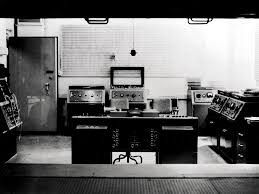 The stereo mix of the song was made on November 7th, 1967 in the control room of EMI Studio Two by George Martin, Ken Scott and 2nd engineer Peter Mew. Now finally entitled “Flying,” the song only needed one attempt at a stereo mix from the same "take eight,” this then needing editing to bring the song down to 2:16 (which was two seconds longer than the mono mix resulting in a little more backwards Mellotron sounds at the end). The jazz recording was also taken out during this editing process. The stereo landscape has the original rhythm track and the scant remaining backwards tapes from John and Ringo at the end of the song in the left channel while the added guitar passages from George, John’s Mellotron and Ringo’s maracas are in the right channel. The chanting “la-la-la”s are panned mostly to the right channel while the backward Mellotron sounds are dispersed between both channels. Unlike the mono mix, these backward Mellotron sounds aren't audible on the stereo mix until the rhythm track comes to an end. The stereo mix of the song was made on November 7th, 1967 in the control room of EMI Studio Two by George Martin, Ken Scott and 2nd engineer Peter Mew. Now finally entitled “Flying,” the song only needed one attempt at a stereo mix from the same "take eight,” this then needing editing to bring the song down to 2:16 (which was two seconds longer than the mono mix resulting in a little more backwards Mellotron sounds at the end). The jazz recording was also taken out during this editing process. The stereo landscape has the original rhythm track and the scant remaining backwards tapes from John and Ringo at the end of the song in the left channel while the added guitar passages from George, John’s Mellotron and Ringo’s maracas are in the right channel. The chanting “la-la-la”s are panned mostly to the right channel while the backward Mellotron sounds are dispersed between both channels. Unlike the mono mix, these backward Mellotron sounds aren't audible on the stereo mix until the rhythm track comes to an end.
Song Structure and Style
The bulk of this full-Beatles-credited composition (listed alphabetically on the British release as “Harrison, Lennon, McCartney, Starkey”) consists mainly of a twelve-bar blues pattern repeated three times. Therefore, the structure comprises a ‘verse/ verse/ verse’ (or aaa) format for the first 90 seconds, followed by 45 seconds of overdubbed backward Mellotron effects of no fixed musical structure.
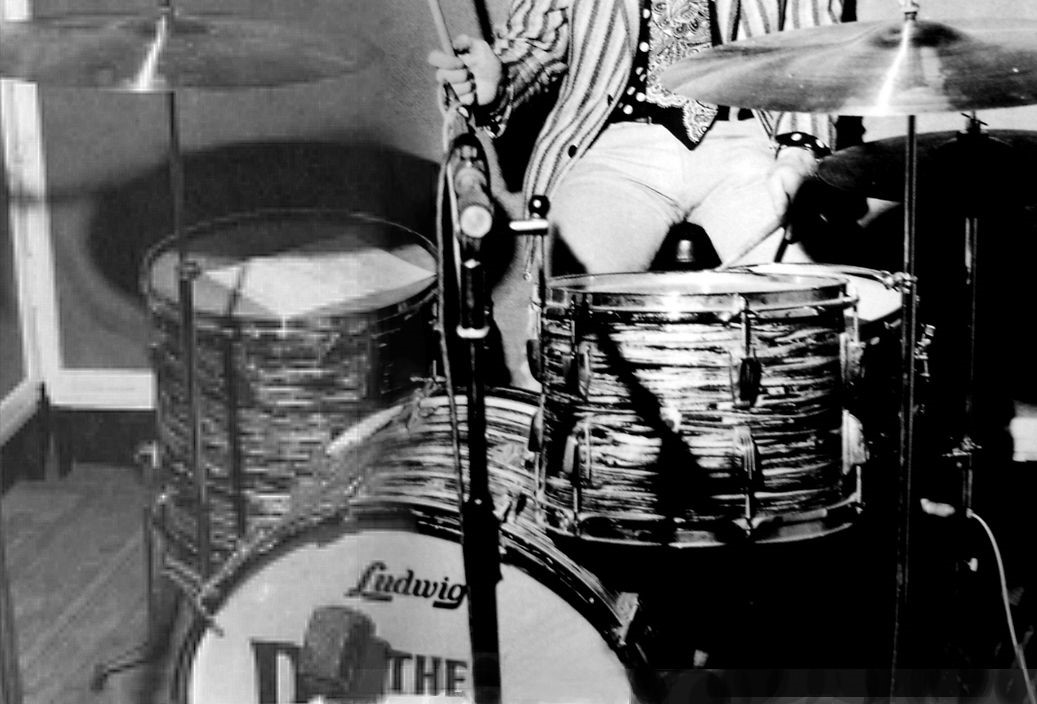 The first verse begins directly on the downbeat with bass, drums and tremolo-laden electric guitar from the rhythm track for the first five measures. Ringo plays a simple plodding 4/4 beat while Paul bounces around a little on the bass to accentuate George’s simple rhythm guitar playing. The sixth measure reveals a George Harrison overdubbed guitar passage which extends throughout the seventh measure and then disappears for the eighth measure. A new melodic guitar passage then appears in the ninth measure to extend to the end of the verse while Ringo ends the verse with a slight anticipatory snare drum accent to segue the song into the second verse that follows. The first verse begins directly on the downbeat with bass, drums and tremolo-laden electric guitar from the rhythm track for the first five measures. Ringo plays a simple plodding 4/4 beat while Paul bounces around a little on the bass to accentuate George’s simple rhythm guitar playing. The sixth measure reveals a George Harrison overdubbed guitar passage which extends throughout the seventh measure and then disappears for the eighth measure. A new melodic guitar passage then appears in the ninth measure to extend to the end of the verse while Ringo ends the verse with a slight anticipatory snare drum accent to segue the song into the second verse that follows.
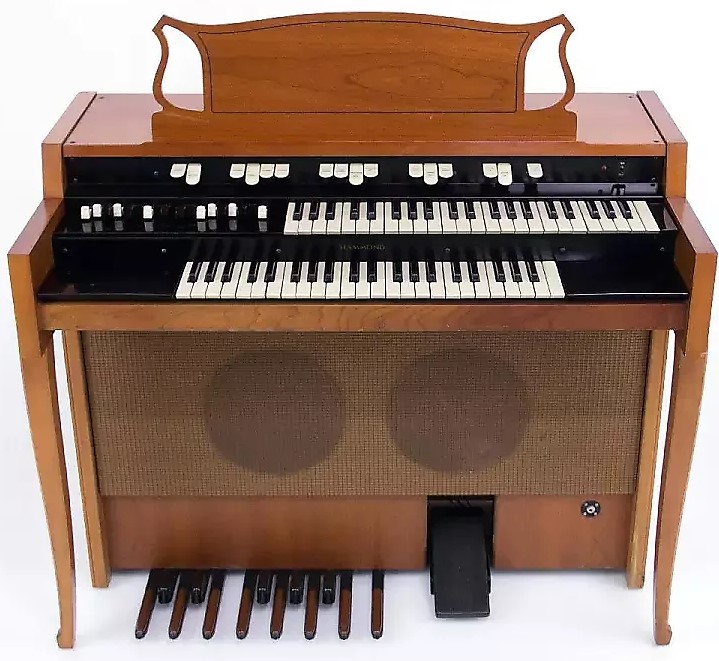 Two new elements appear on top of the existing instrumentation for the second verse, these both being played by John. The organ he played on the rhythm track comes in for the first time on the downbeat, as does his overdubbed melody line as played on Mellotron. This continues throughout the rest of the verse with the final addition being an identical repeat of George’s guitar overdubbed passage as heard in the first verse during the ninth through twelfth measures, this final measure including a subtle but appropriate drum fill from Ringo. Two new elements appear on top of the existing instrumentation for the second verse, these both being played by John. The organ he played on the rhythm track comes in for the first time on the downbeat, as does his overdubbed melody line as played on Mellotron. This continues throughout the rest of the verse with the final addition being an identical repeat of George’s guitar overdubbed passage as heard in the first verse during the ninth through twelfth measures, this final measure including a subtle but appropriate drum fill from Ringo.
The third verse includes all of the same instrumentation as the previous one except for the Mellotron, which is now gone for the remainder of the 12-bar blues section of the song. In its absence is a four-man Beatle chorus (with Ringo in first chair) singing in unison the same melody line the Mellotron played in the second verse. Ringo thinks to include a simple drum fill in both the sixth and ninth measures this time around while the singers switch to harmony “aaah”s in the ninth through twelfth measures. In the ninth measure we begin to hear the ending of the backwards recorded Mellotron noodling for the first time (I say "ending" because they were recorded backwards…remember?), which is much more discernible on the mono mix. Apart from the backward Mellotron swirling that comprises the rest of the song and then fades away, we hear a bit of what sounds like the only evidence of John and Ringo’s backward overdubs in the background from 1:44 to 1:52 of the finished recording.
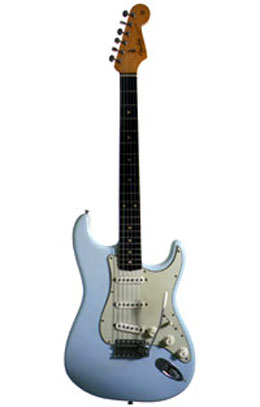 Paul, being the catalyst of this song, plays impressive bass guitar, sings in the ‘Beatle chorus’ and possibly swirls away on the Mellotron haphazardly for seven minutes or so. John undoubtedly also contributed to the backward Mellotron overdub as well as playing both organ and Mellotron in the twelve-bar blues section of the song, not to mention a hearty vocal contribution. George put in some very nice guitar passages that add some elegant touches to the song as well as singing in the chorus, while Ringo’s drums and maracas are suitably performed. Let us not forget Ringo’s lead vocals as well! Paul, being the catalyst of this song, plays impressive bass guitar, sings in the ‘Beatle chorus’ and possibly swirls away on the Mellotron haphazardly for seven minutes or so. John undoubtedly also contributed to the backward Mellotron overdub as well as playing both organ and Mellotron in the twelve-bar blues section of the song, not to mention a hearty vocal contribution. George put in some very nice guitar passages that add some elegant touches to the song as well as singing in the chorus, while Ringo’s drums and maracas are suitably performed. Let us not forget Ringo’s lead vocals as well!
American Releases
November 27th, 1967 was the US release date for the album “Magical Mystery Tour,” which included the instrumental “Flying.” The vinyl version of this album continued to be reissued throughout the years, while it was first released on compact disc on September 21st, 1987 and then was re-released in a remastered state on September 9th, 2009.
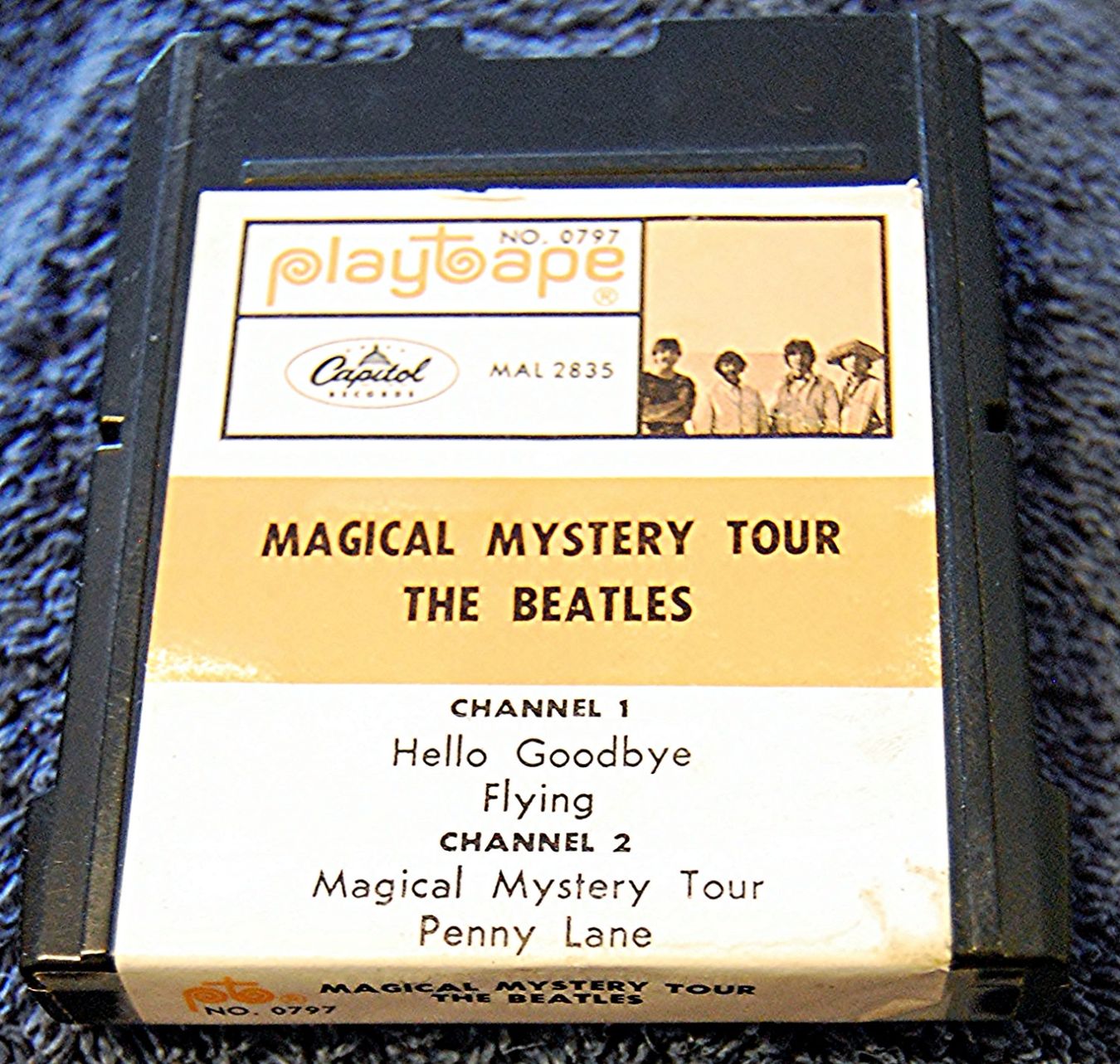 Sometime in 1967, Capitol released Beatles music on a brand new but short-lived format called "Playtapes." These tape cartridges did not have the capability to include entire albums, so a truncated four-song version of "Magical Mystery Tour" was released in this portable format in early 1968, some rare copies having a picture from the "Help!" soundtrack album on the front of the tape. "Flying" was one of the four songs on this release. These "Playtapes" are highly collectable today. Sometime in 1967, Capitol released Beatles music on a brand new but short-lived format called "Playtapes." These tape cartridges did not have the capability to include entire albums, so a truncated four-song version of "Magical Mystery Tour" was released in this portable format in early 1968, some rare copies having a picture from the "Help!" soundtrack album on the front of the tape. "Flying" was one of the four songs on this release. These "Playtapes" are highly collectable today.
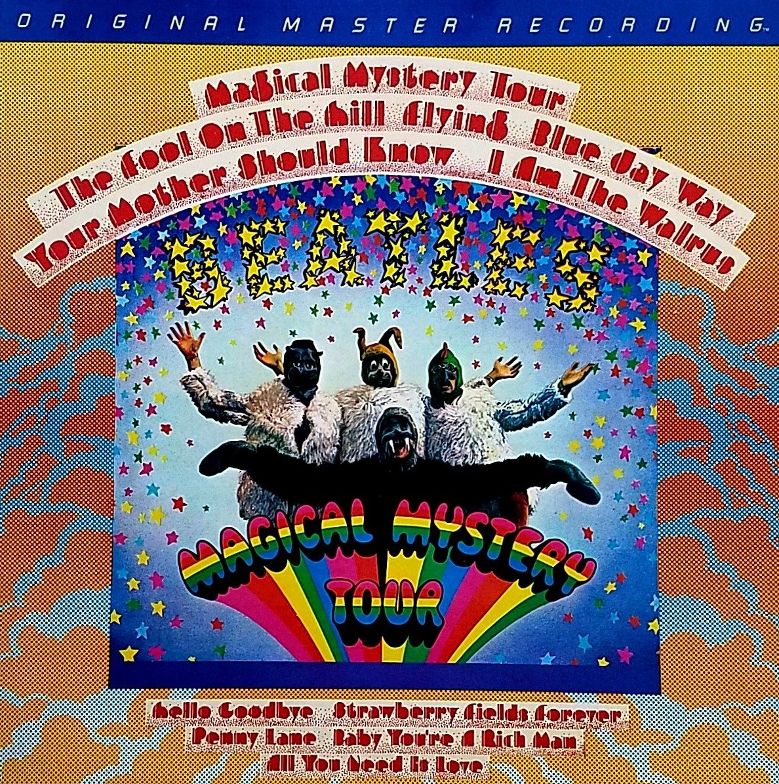 An interesting US vinyl edition of the “Magical Mystery Tour” album was released on February 1st, 1981. This was manufactured by Mobile Fidelity Sound Lab in Chatsworth, California and was part of their "Original Master Recording" series, which prepared its albums utilizing half-speed mastering technology from the original master tapes. In this case, however, they leased the master tape from EMI in the UK, not realizing that this was a second generation master tape originally supplied by Capitol Records in America. While this release sounded superior to conventional vinyl versions, it still contained the duophonic (fake stereo) mixes of “Penny Lane,” “Baby, You're A Rich Man” and “All You Need Is Love.” Also, as was the case with all of the vinyl editions of the album by this time, the original multi-page booklet was omitted from this new vinyl release. Nevertheless, this edition of the album was only available for a short time and is quite collectible today. An interesting US vinyl edition of the “Magical Mystery Tour” album was released on February 1st, 1981. This was manufactured by Mobile Fidelity Sound Lab in Chatsworth, California and was part of their "Original Master Recording" series, which prepared its albums utilizing half-speed mastering technology from the original master tapes. In this case, however, they leased the master tape from EMI in the UK, not realizing that this was a second generation master tape originally supplied by Capitol Records in America. While this release sounded superior to conventional vinyl versions, it still contained the duophonic (fake stereo) mixes of “Penny Lane,” “Baby, You're A Rich Man” and “All You Need Is Love.” Also, as was the case with all of the vinyl editions of the album by this time, the original multi-page booklet was omitted from this new vinyl release. Nevertheless, this edition of the album was only available for a short time and is quite collectible today.
Since "Flying" was originally released on the “Magical Mystery Tour” EP in Britain, the song was included on the “Compact Disc EP Collection” box set, which was released on June 30th, 1992, appearing in both mono and stereo.
 Then on September 9th, 2009, the original mono mix of “Flying” was included in the CD box set “The Beatles In Mono,” this extensive collection containing the entire mono Beatles catalog in a vibrant remastered condition. The vinyl edition of this box set first came out on September 9th, 2014. Then on September 9th, 2009, the original mono mix of “Flying” was included in the CD box set “The Beatles In Mono,” this extensive collection containing the entire mono Beatles catalog in a vibrant remastered condition. The vinyl edition of this box set first came out on September 9th, 2014.
On October 8th, 2012, a restored version of the film “Magical Mystery Tour” was released on DVD and Blu-ray, available also as a deluxe edition “Collectors Box” which included an actual vinyl EP set as originally released in Britain but in re-mastered mono. With “Flying” as part of this set, this was the first time the vinyl EP was released in America.
Live Performances
The Beatles never intended to perform the song live and, since they were well past their touring days, no opportunity ever presented itself anyway.
Conclusion
“We made it in color,” Paul stated about the television film just after its first airing, “and it was put out, first of all, on BBC1 in black and white. There were whole sequences that you just couldn’t understand. I saw it on the telly and it just looked mad in black and white, because there were sequences where the colors changed. So that was a bit daft.”
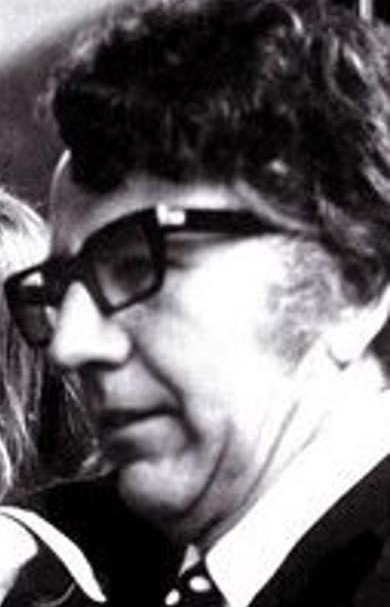 The sequence Paul is specifically referring to is the footage shown while the song “Flying” was heard in the film. Footage acquired by film producer Denis O’Dell, outtakes of aerial footage used in the 1963 movie “Dr. Strangelove,” were strung together and sometimes superimposed using color filters that changed from blue to yellow to green etc. While this sequence is quite effective when seen on a large screen, especially when watching the 2012 released remastered version on Blu-ray, seeing it in black and white on a tiny British TV set must have been quite boring. The sequence Paul is specifically referring to is the footage shown while the song “Flying” was heard in the film. Footage acquired by film producer Denis O’Dell, outtakes of aerial footage used in the 1963 movie “Dr. Strangelove,” were strung together and sometimes superimposed using color filters that changed from blue to yellow to green etc. While this sequence is quite effective when seen on a large screen, especially when watching the 2012 released remastered version on Blu-ray, seeing it in black and white on a tiny British TV set must have been quite boring.
At least those audiences had the ‘trippy’ 12-bar blues Beatles original “Flying” to entertain them while the indiscernible images on their screens floated by. As for the rest of us, the colorful imagery in our minds was the perfect medium to accompany the song as the record revolved on our turntables. I think we all probably got the better end of the bargain in the long run!
Song Summary
“Flying”
Written by: John Lennon / Paul McCartney / George Harrison / Ringo Starr
-
Song Written: September 8 & 28, 1967
-
Song Recorded: September 8 & 28, 1967
-
First US Release Date: November 27, 1967
-
-
US Single Release: n/a
-
Highest Chart Position: n/a
-
-
Length: 2:14 (mono) 2:16 (stereo)
-
Key: C major
-
Producer: George Martin
-
Engineers: Geoff Emerick, Ken Scott, Richard Lush
Instrumentation (most likely):
-
Paul McCartney - Bass Guitar (1964 Rickenbacker 4001 S), Mellotron (1964 Mark II), vocals
-
John Lennon - Mellotron (1964 Mark II), Organ (Hammond L-100), vocals
-
George Harrison - Lead and Rhythm Guitar (1961 Sonic Blue Fender Stratocaster), vocals
-
Ringo Starr - Drums (1964 Ludwig Super Classic Black Oyster Pearl), maracas, vocals
Written and compiled by David Rybaczewski
|
IF YOU WOULD LIKE TO MAKE A DONATION TO KEEP THIS WEBSITE UP AND RUNNING, PLEASE CLICK BELOW!
|